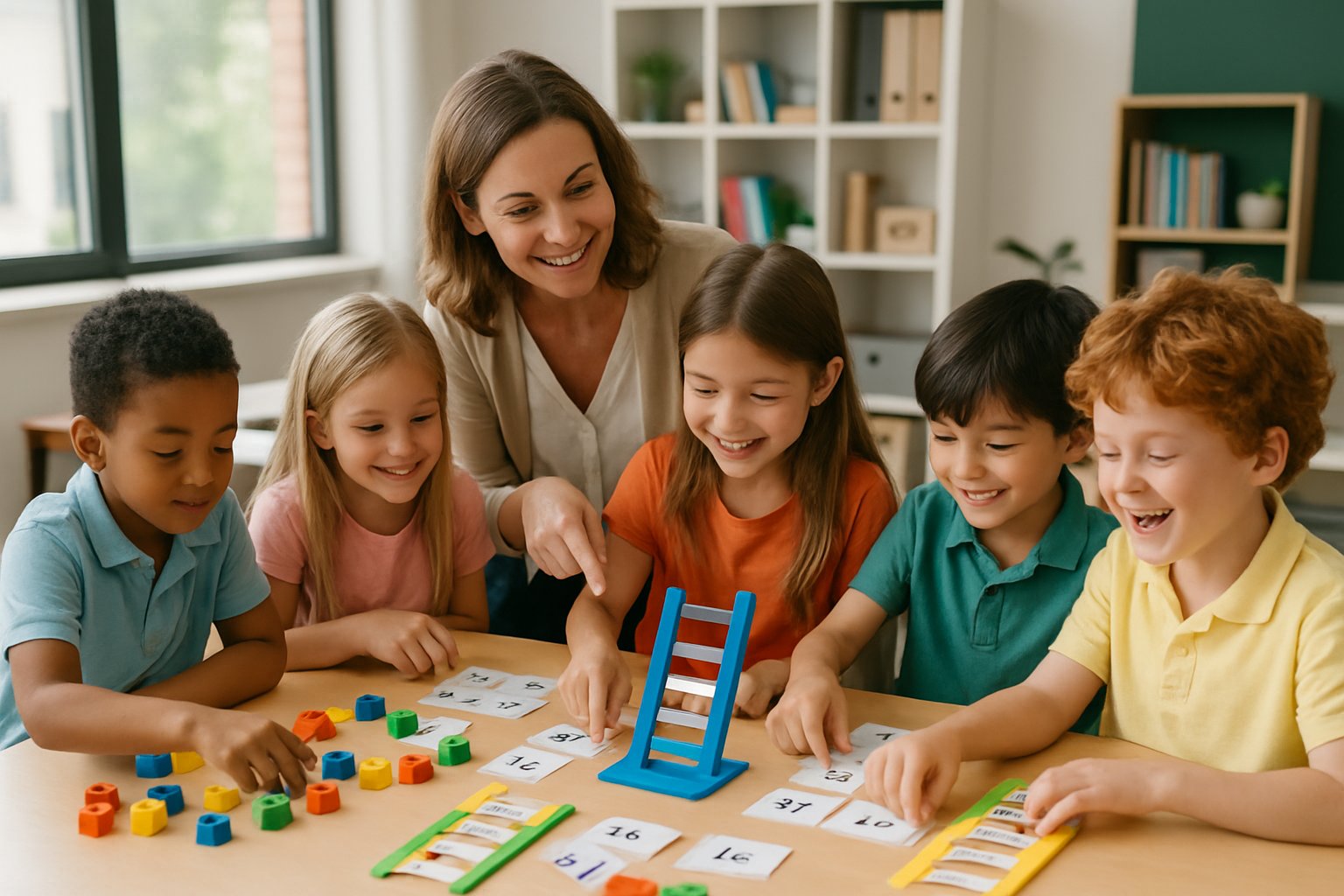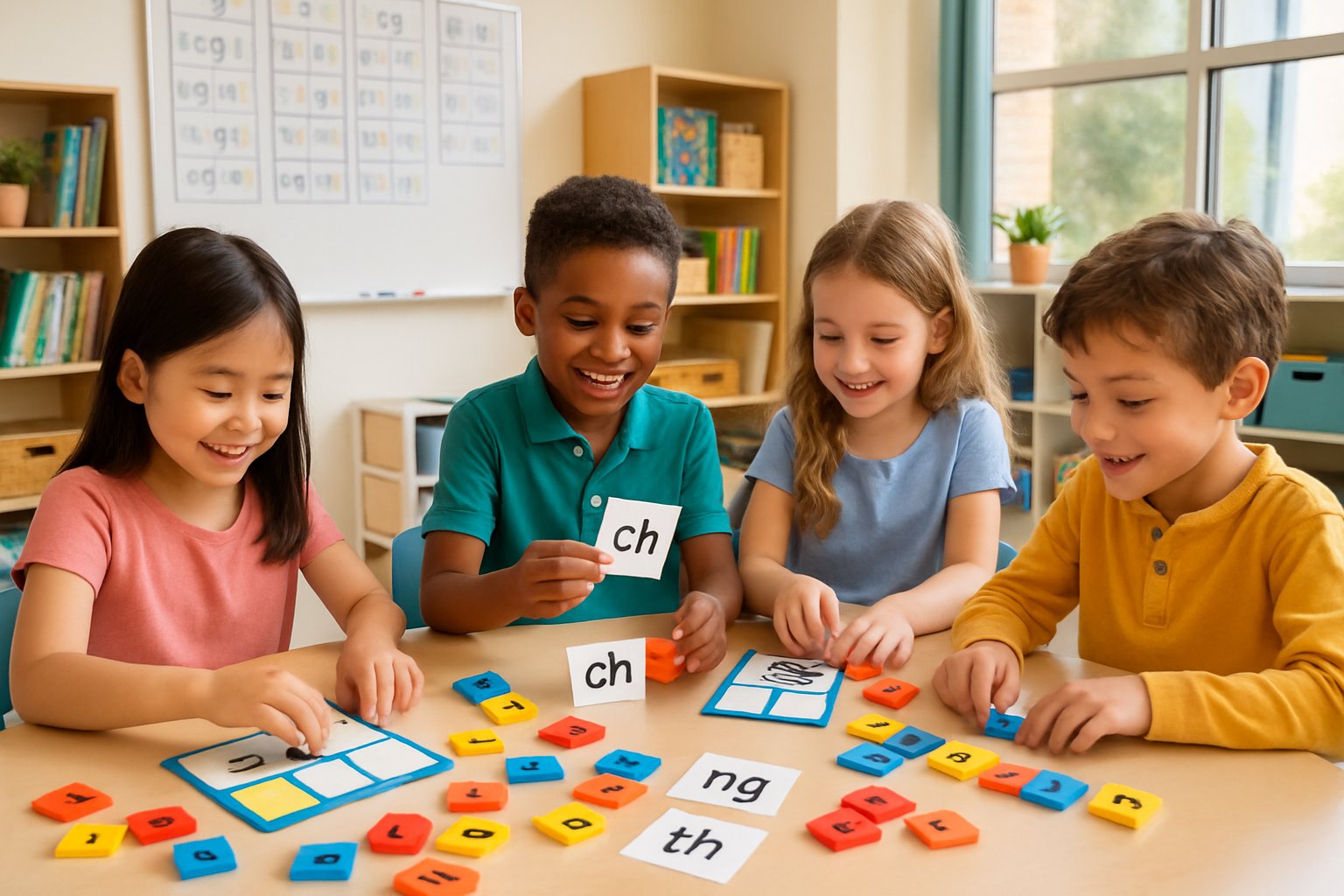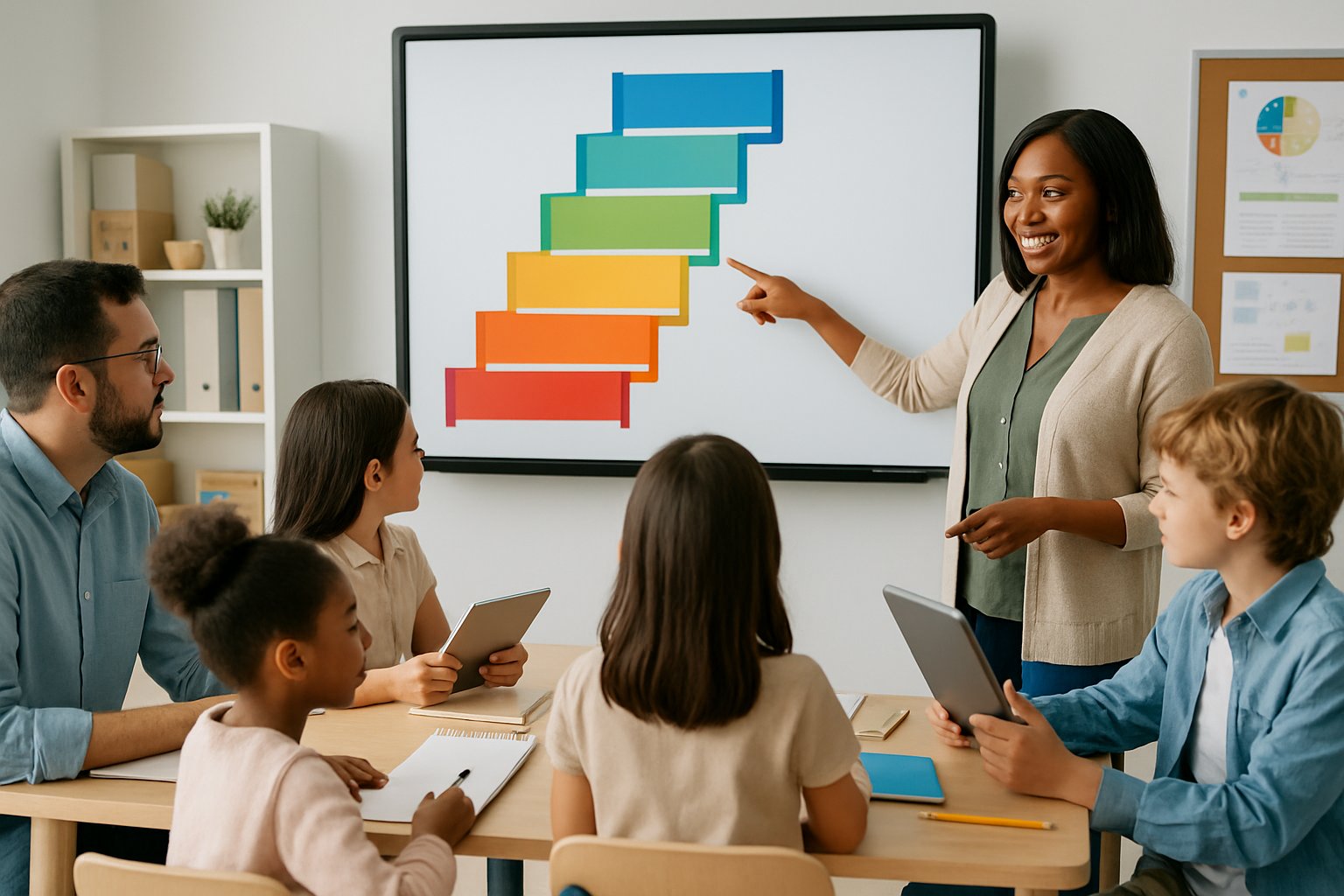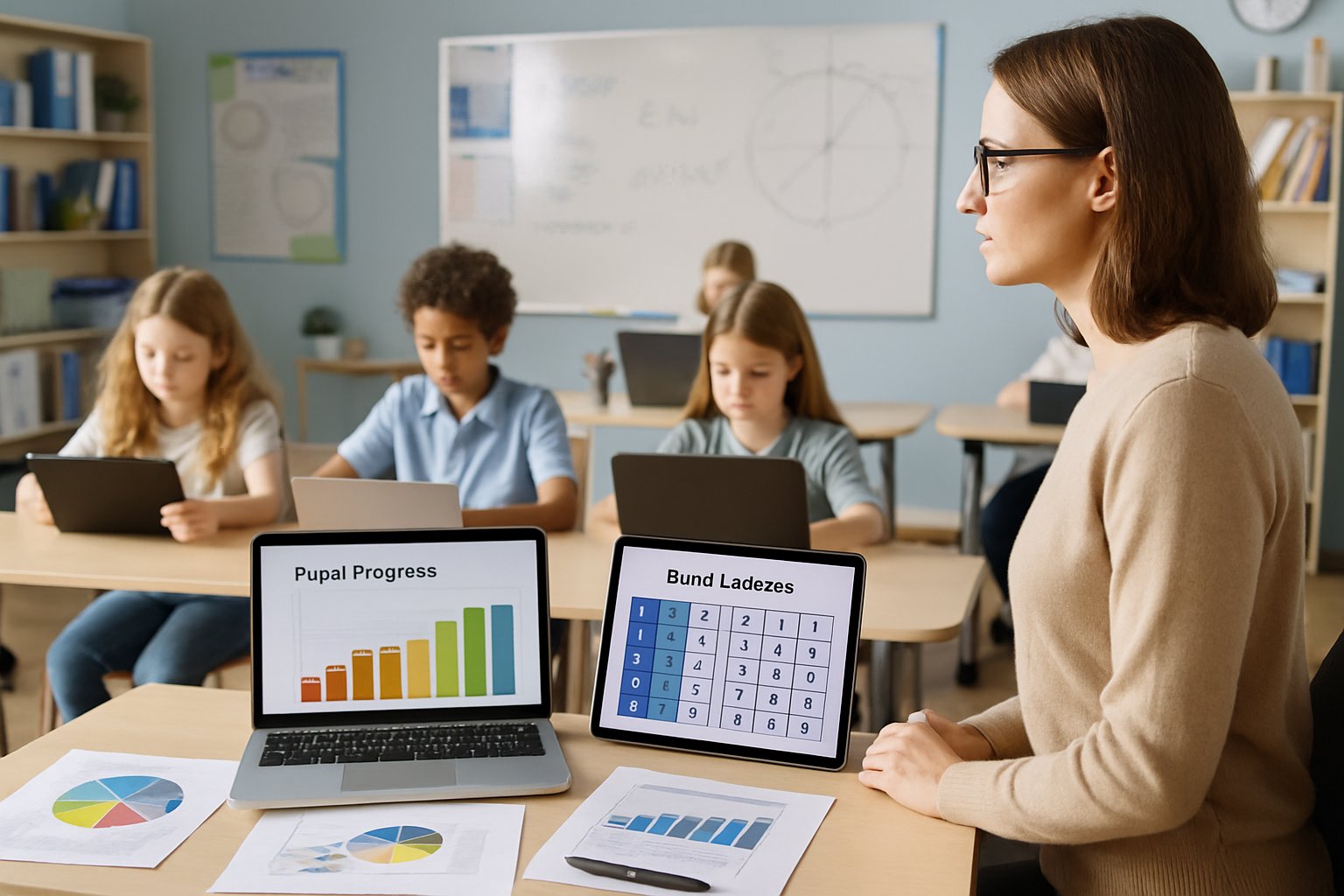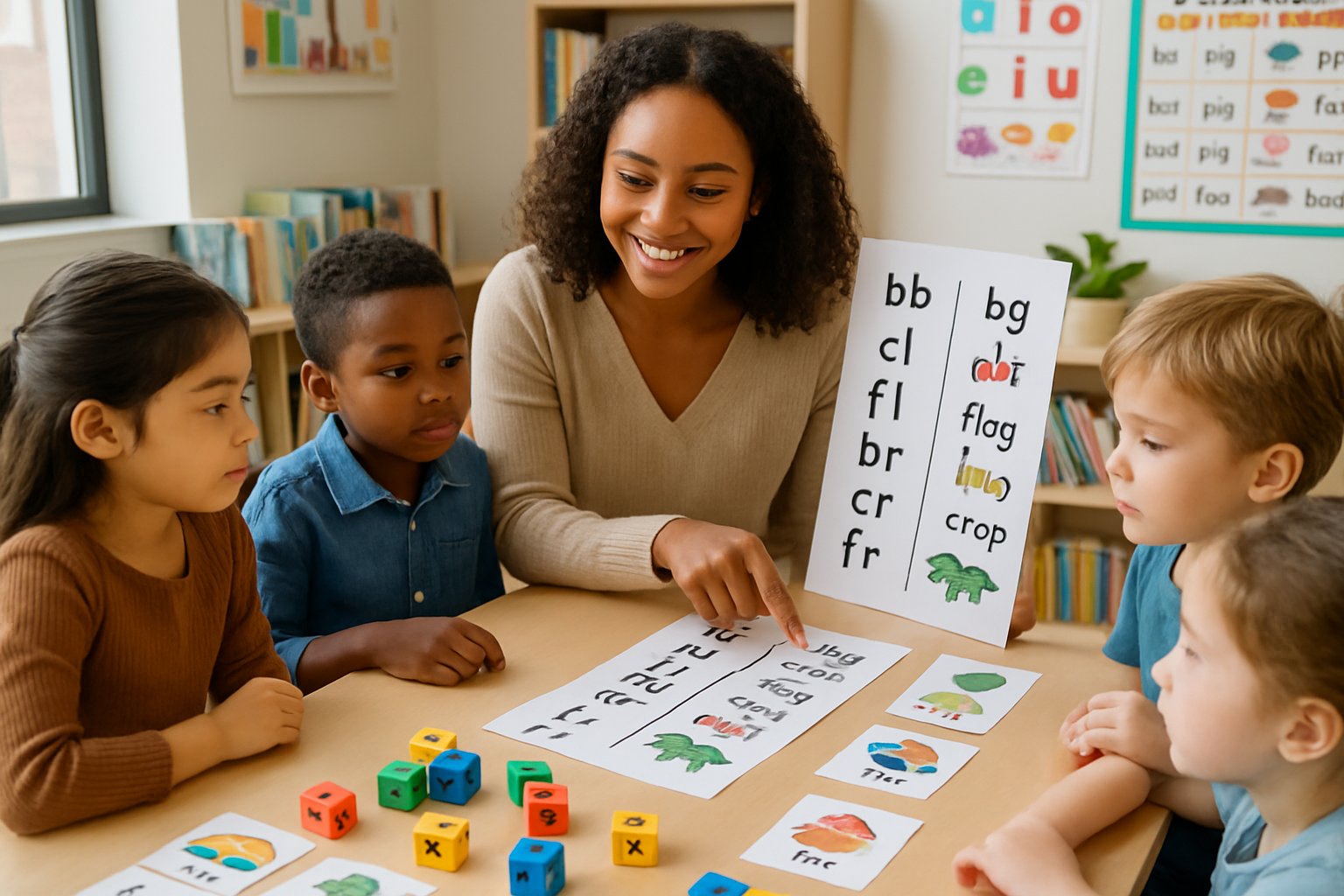Understanding Blend Ladders and Word Families
Both blend ladders and word families help children learn to read, but they work in different ways. Blend ladders focus on changing one sound at a time, while word families group words with the same ending patterns.
What Are Blend Ladders?
Blend ladders are activities that strengthen letter-sound relationships by having children change one sound in a word to make a new word. They are also called sound ladders or word chains.
Children start with one word and climb up the ladder. Each step changes just one sound. For example, a child might start with “cat” and change it to “bat” by switching the first sound.
The activity works like climbing a real ladder. Each rung represents a new word that differs by only one phoneme from the word before it.
Word ladders connect phonemic awareness to phonics skills. Children learn to blend sounds together and build their reading abilities step by step.
Types of changes children can make:
- Beginning sounds: cat → mat
- Ending sounds: dog → dot
- Middle sounds: cub → cab
- Mixed changes: hat → bat → bag → bug
Defining Word Families
Word families are groups of words that share the same ending pattern. These words have the same rime, which includes the vowel and any consonants that follow it.
Children who learn word families can read new words more easily. Once they know the “-at” family, they can read “cat,” “hat,” “bat,” and “rat.”
Common word families include:
- -at family: cat, hat, bat, rat
- -an family: can, man, pan, ran
- -ig family: big, dig, pig, wig
- -op family: hop, pop, top, mop
Word families help children see patterns in words. This makes reading and spelling easier because children can use what they already know.
Word family activities focus on learning and identifying different blends within these patterns. Teachers often use word family ladders to combine both approaches.
Key Differences Between Blend Ladders and Word Families
The main difference lies in how each method teaches phonics skills to children.
Blend ladders focus on:
- Changing one sound at a time
- Building phoneme awareness
- Teaching sound manipulation
- Working with any type of sound change
Word families focus on:
- Learning spelling patterns
- Recognizing word endings
- Building vocabulary quickly
- Working with consistent rimes
Blend ladders can be easily differentiated for different skill levels. Teachers can start with simple three-letter words and add more complex patterns later.
Word families teach children to recognize chunks of letters. This helps them read faster because they don’t have to sound out every letter.
Both methods work well for different learning goals. Blend ladders build stronger phonemic awareness skills. Word families help children learn to read more words quickly.
How Each Approach Builds Foundational Reading Skills
Both blend ladders and word families develop essential reading abilities through different pathways. Blend ladders focus on breaking apart and combining sounds, while word families emphasize pattern recognition and phonemic manipulation.
Blending and Segmenting With Blend Ladders
Blend ladders teach children to combine individual sounds into complete words. Students start with simple two-sound combinations like “at” or “in.”
They gradually add beginning sounds to create new words. A child might begin with “at” and then blend “c-at” to make “cat.”
This method strengthens foundational reading skills by requiring students to hear each sound separately. Children must identify the individual phonemes before putting them together.
Segmenting practice happens when students break words apart. They take “dog” and separate it into “d-o-g” sounds.
The ladder structure provides clear steps for learning. Each rung represents a new sound combination that builds on previous knowledge.
Phonemic Awareness With Word Families and Word Ladders
Word families develop phonemic awareness through rhyming patterns. Children learn that “-at” appears in “cat,” “bat,” and “hat.”
This approach helps students recognize sound patterns quickly. They understand that changing one letter creates a new word with the same ending sound.
Phonemic awareness grows as children manipulate beginning sounds. They replace the “c” in “cat” with “r” to make “rat.”
Word ladders take this further by changing sounds in different positions. Students might change “cat” to “cot” by switching the middle vowel sound.
These activities strengthen the ability to hear individual sounds within words. Children develop skills needed for both reading and spelling new words.
Applying CVC Words and Digraph Practice
CVC words (consonant-vowel-consonant) work well with both approaches. Simple words like “dog,” “sun,” and “big” provide clear sound patterns.
Blend ladders break CVC words into separate sounds. Students learn to blend “d-o-g” smoothly without stopping between sounds.
Word families group CVC words by their endings. The “-ig” family includes “big,” “dig,” and “pig.”
Digraphs present new challenges for both methods. These two-letter combinations like “ch,” “sh,” and “th” make single sounds.
Blend ladders teach digraphs as single units to blend. Students learn that “ch-i-p” has three sounds, not four letters.
Word families with digraphs create new pattern groups. The “-ack” family includes “back,” “pack,” and “track.”
Using Magnetic Letters to Strengthen Learning
Magnetic letters make both approaches more hands-on and engaging. Children physically move letters to create new words.
With blend ladders, students use magnetic letters to build each sound separately. They place “c,” “a,” and “t” in order while saying each sound.
Word family practice becomes tactile when children swap out beginning letters. They remove “c” from “cat” and replace it with “b” to make “bat.”
The physical movement helps children remember letter-sound connections. Moving letters engages different learning styles and strengthens memory.
Magnetic letters also help with letter formation and recognition. Children see and feel the shapes while building words.
Both approaches benefit from this hands-on tool. Students can quickly make changes and see immediate results from their letter manipulations.
Choosing the Right Method for Your Child

The best approach depends on each child’s specific needs and learning stage. Teachers can match blend ladders or word families to individual student abilities by considering their phonemic awareness skills and reading level.
Supporting Struggling Readers and Early Learners
Struggling readers often benefit more from blend ladders than word families. Word families can promote guessing habits in some students. Children may look at the ending pattern and guess the word instead of reading each sound.
Blend ladders work better for kids who cannot hold three sounds in their head at once. These children need to build up their blending skills slowly.
Signs a child needs blend ladders:
- Struggles to blend simple CVC words
- Has weak phonemic awareness
- Guesses at words frequently
- Cannot segment sounds in words
Teachers should use word chains to support children with poor phonological awareness. Start with basic CVC blends before moving to more complex patterns.
Incorporating Blend Ladders and Word Families in Small Groups
Small groups allow teachers to target specific skills effectively. Word chains and ladders work well as no-prep phonics routines during guided reading time.
Teachers can differentiate instruction within the same group. Some students work on simple consonant changes while others tackle more complex patterns.
Small group setup tips:
- Keep groups to 3-4 students maximum
- Match students with similar skill levels
- Use whiteboards for quick practice
- Rotate between blend ladders and word families
Word ladders connect phonemic awareness to phonics instruction effectively. Students practice blending, segmenting, and manipulating sounds in one activity.
RTI and Classroom Applications of Word Chains
RTI programs need structured, systematic approaches. Word chains support both blending and segmenting skills that struggling readers require.
Tier 2 interventions should focus on blend ladders for students with significant gaps. These children need intensive phonemic awareness work before tackling word families.
RTI implementation steps:
- Assess phonemic awareness skills first
- Start with simple sound substitutions
- Progress to more complex manipulations
- Monitor progress weekly
Tier 3 students may need individual instruction with word chains using manipulatives. Puff balls or disks help children visualize sound changes.
Classroom teachers can use both methods during whole group instruction. Start lessons with blend ladders, then move to word family patterns for reinforcement.
Adapting Activities to Individual Needs
Children learn at different paces and need varied approaches. Some students master blend ladders quickly and can move to word families. Others need extended practice with sound manipulation.
Adaptation strategies include:
- Using manipulatives for kinesthetic learners
- Adding visual cues for struggling readers
- Increasing complexity for advanced students
- Providing extra practice time when needed
Teachers should follow a systematic progression from simple to complex skills. Start with beginning sound changes, then move to ending and middle sounds.
Advanced learners can work with longer words and more complex spelling patterns. These students benefit from word families that include vowel teams and consonant blends.
Regular assessment helps teachers adjust instruction. Students who struggle with basic blend ladders need more phonemic awareness work before advancing.
